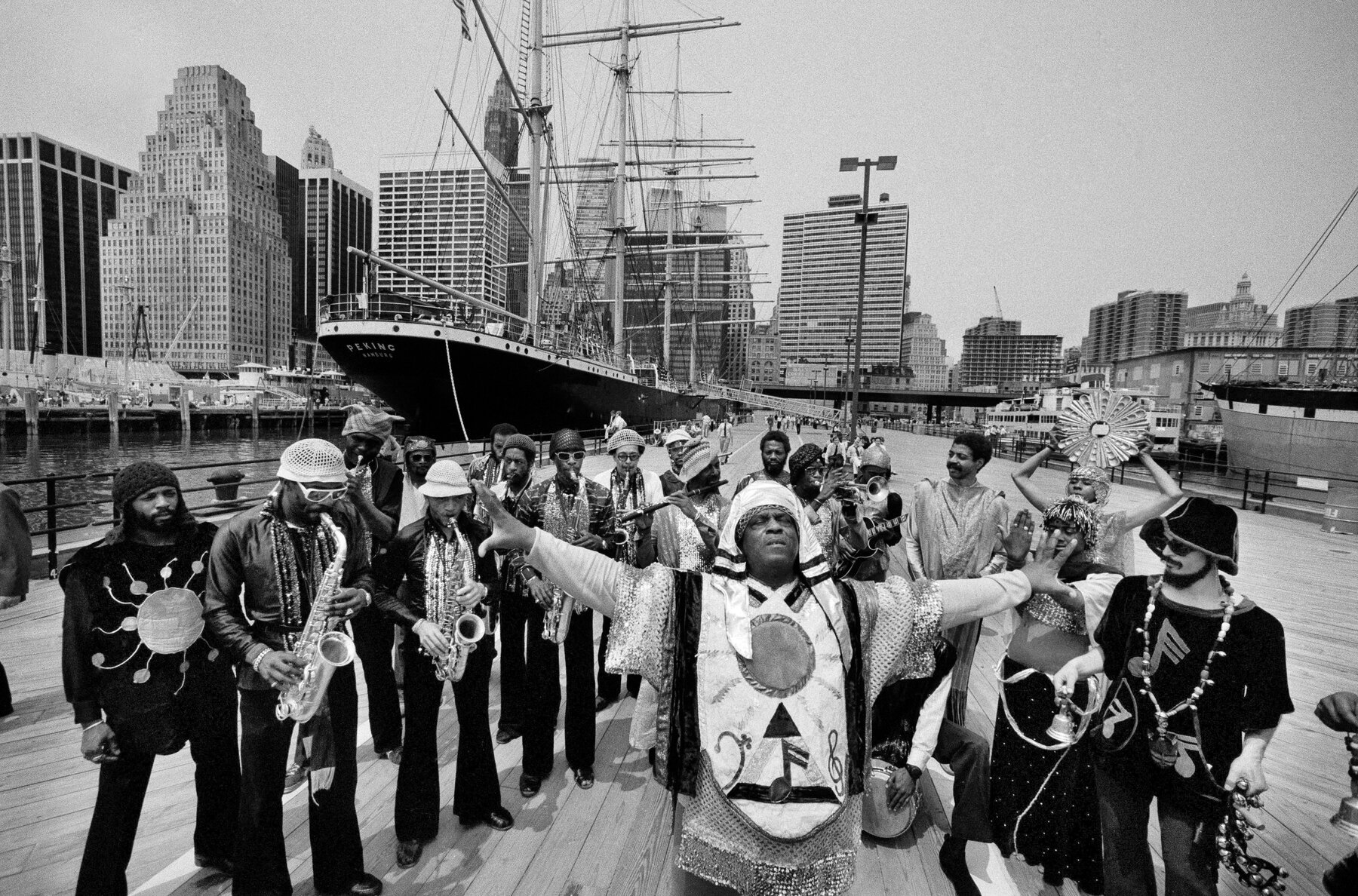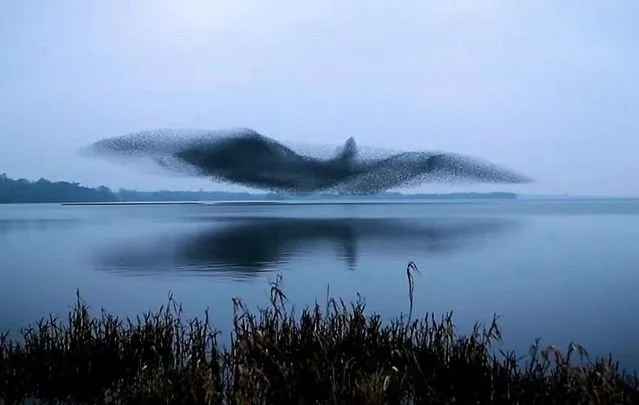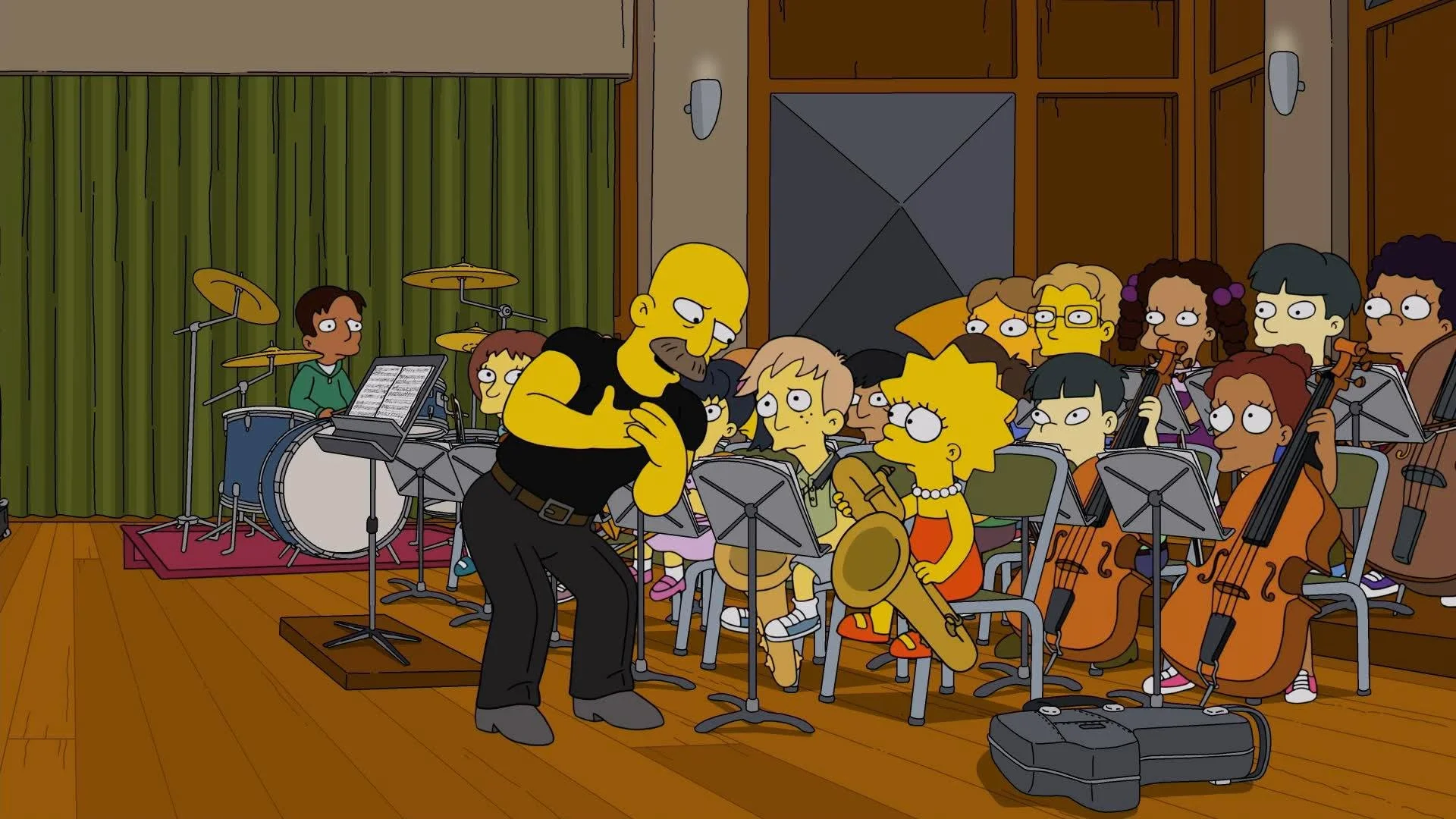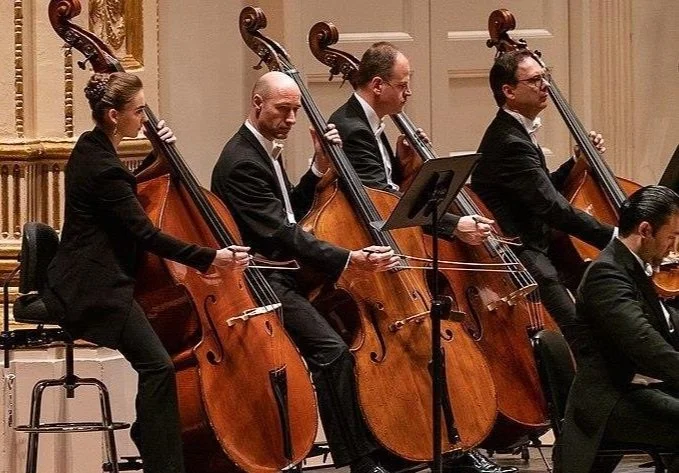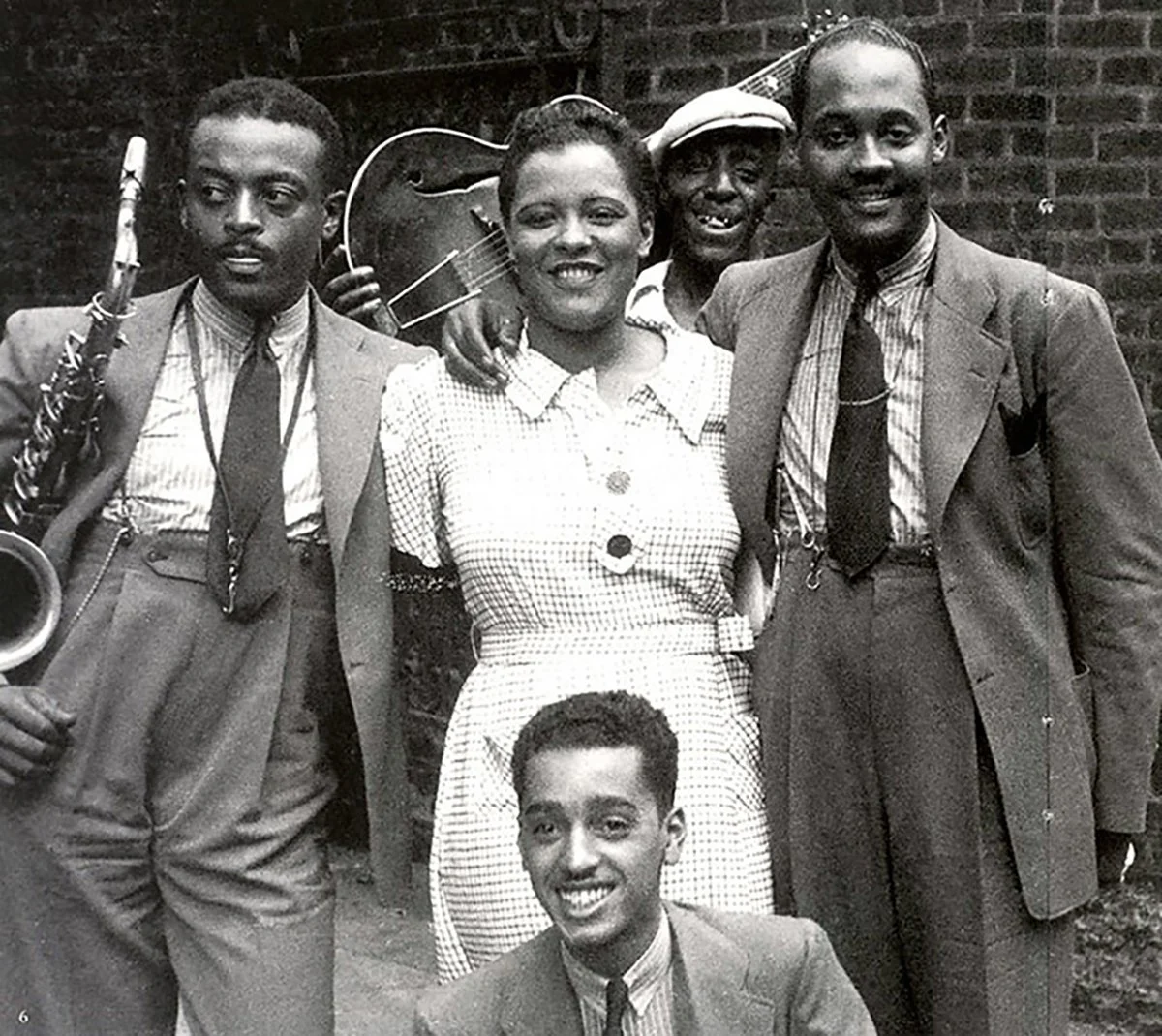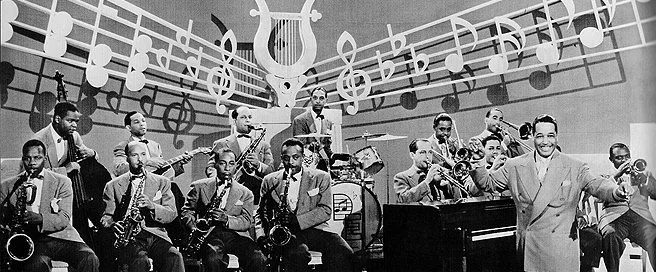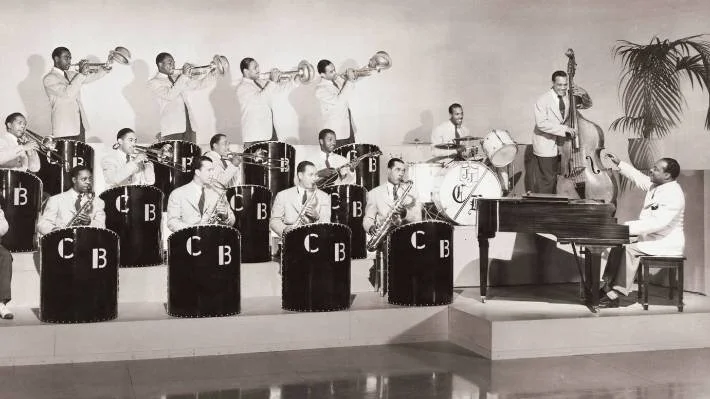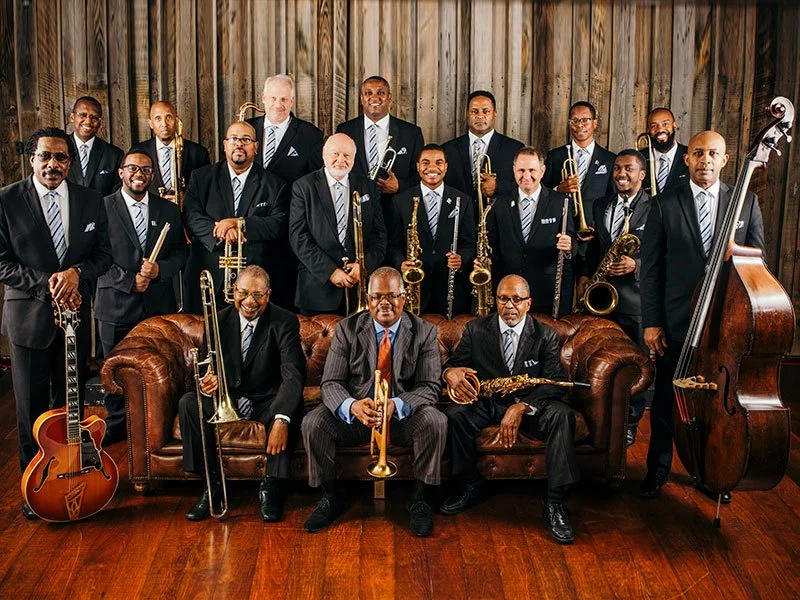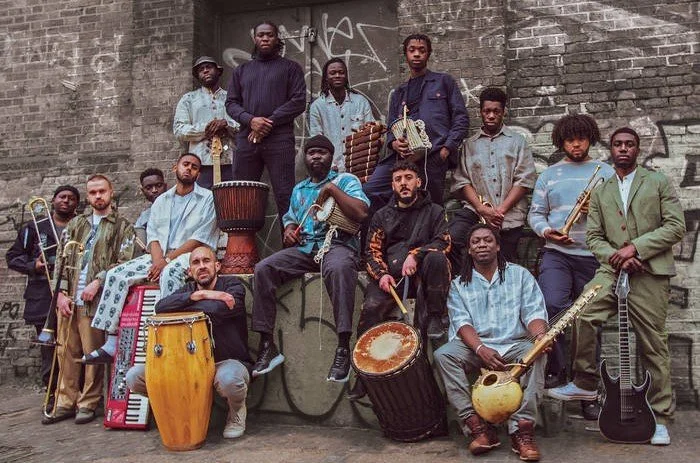By The Landlord
"The sound of the orchestra is one of the most magnificent that has ever existed." – Chick Corea
"The Big Band Era is my era. People say, 'Where did you get your style from?' I did the Big Band Era on guitar. That's the best way I could explain it." – Chuck Berry
"Beauty and fullness of tone can be achieved by having the whole orchestra play with high clarinets and a carefully selected number of piccolos." – Gustav Mahler
"When I composed, I heard my music played by the orchestra within days of completion of the score. No master at a conservatory, no matter how revered, can teach as much by verbal criticism as can a cold and analytical hearing of one's own music being played." – Andre Previn
"Whenever I get an idea for a song, even before jotting down the notes, I can hear it in the orchestra, I can smell it in the scenery, I can see the kind of actor who will sing it, and I am aware of an audience listening to it." – Richard Rodgers
"When I want 30 musicians in the orchestra, I get 30." – Les Baxter
"To me it's no accident that all the symphony orchestras around the world tune up to the note A. And A is 440 cycles, except in Germany where it's 444. But the universe is 450 cycles. So what I'm trying to say is, I think it's God's voice, melody especially. Counterpoint, retrograde inversion, harmony... that's the science and the craft." – Quincy Jones
"The better the orchestra, often the harder it is to conduct, not the other way around." – Simon Rattle
"Sometimes there is a 36-piece orchestra going off in my stomach." – Willie Nelson
Is bigger better? When a soloist or singer-songwriter becomes a duo, something changes, they affect each other, there is a new energy. The dynamic broadens again with a trio, then often a bit more so into the classic band number of four musicians. Ideally greater than the sum of its parts. Then, when moving to quintet, sextet, or septet, the group might evolve, perhaps with an expanded sound, or just fill out or embellish to that smaller core band. Is the effect augmented or diluted? And what about when more arrive?
This week the magic number is eight, and often more, of instruments played by different people. The octet, nonet or larger is rarer in pop, rock, country, folk, or other popular genres, but seems to encourage mixes of styles, and by that point the number of musicians is less a band, more of an ensemble, with the complexity and range of sounds fusing, merging and changing exponentially. So as we come, metaphorically, and now musically, together with this final topic before Christmas, with an association of community, this is the territory to explore this week of bigger group's blends, fusions and many characters and flavours.
And after previous topics of duos, and trios, it is time to expand much further outwards, to explore ensembles of a minimum of eight or more instrumental musicians (plus often singers where applicable), but not choirs as such, which is for another time. A big topic? Yes, as it would also include larger classical orchestras as well as big jazz bands, marching bands, bigger folk groups, or mass performances of all types, but the emphasis is on the mix, the colourful combinations, range of sounds and unusual dynamics.
Musical trends of 21st-century have particularly included big-selling artists who, when on tour, save a fortune by performing solo with backing tracks, or as DJs. But with larger numbers of musicians in play, something changes, there are richer layers, human-driven rhythmic changes and while one follows the other, there are greater patterns, not unlike the murmurations of starlings or other creatures. There’s something magical about many musicians en masse suddenly reach a point of perfection.
When it all comes together as one … starling murmuration
But the result isn't always so poetic. There's as much chaos and conflict as harmony. Some of of us may have experienced the polyphony, or indeed cacophony of being in a bigger ensemble as a child – a school orchestra, complete with recorders, drums, flutes, or the full group of classical instruments, scratching, strumming, tooting, parping, banging and crashing, and hopefully, but not always finishing simultaneously. It's a stormy sea of noisy concentration on a voyage of chaos, a wobbly learning curve of mass participation. But it's a valuable lesson in coming together, of society at work and play. And hopefully not all teachers and bandleaders are as tough as JK Simmons from the film Whiplash. Watch out Lisa Simpson ...
Simpsons school orchestra meets Whiplash’s JK Simmons
Community playing is deep-seated in our ancestral past, and likely to be hardwired in our brains, so it makes for group dynamics beyond just the music. The social minutiae of bigger ensembles are as fascinating as the musical ones. My dad was a freelance musician. He dabbled on the piano, but was a professional on violin and viola, and would do gigs in orchestras all over for classical or other shows. When I was very young, and he was playing in Manchester, my mum sometimes brought me along and, at the interval, I would be able to come towards the front and wave to him in the orchestra pit beneath the stage.
I was fascinated by all the goings on down there, the variety of sizes and shapes of instruments and people nursing them, the rows of cellos and double basses on the other side, the brass section with trumpets and trombones who looked variously bored, mischievous and perhaps had had a few sneaky drinks. The restlessly reed-wetting and fiddling clarinets, oboes and saxophones. The fella with the sousaphone who was always burlier. Or the lonely guy on percussion who had a huge range of things to play – timpanis, cymbals, bells, a gong, but would often have to wait 690 bars before his single moment of glory came. The whole glorious, poorly paid, excess of it all.
Members of the Vienna Philharmonic
Orchestras and bands are also a buzzing hive of gossip, intrigue and social hierarchy. My dad never really let on what went on within an orchestra at home or on tour, other than there was uncomfortable snobbery from the violins towards the violas. The British class system often manifests itself in workplaces. But there must have been much more creative play at large, rampant affairs between double-bass and lead violin, piccolo and cello, trumpet and harp, though whether Manchester's Hallé, Birmingham Philharmonic, or BBC Symphony, I never got to hear about who stroked whose strings or blew what horn.
I imagine in the big band era when things got in full swing, led by Duke Ellington, Jimmie Lunceford, Bennie Moten, Cab Calloway, Earl Hines, and Fletcher Henderson, Count Basie, Benny Goodman, Glenn Miller, Jean Goldkette, Russ Morgan, Isham Jones or Les Baxter, and the rest that followed, the dynamics of these groups were may have been both embouchureally tight-lipped but sexually loose. And imagine being a female singer, a young Eugenie Baird, Billie Holiday, Sarah Vaughan in such an environment. It must have been quite a challenge on how to conduct oneself.
Billie Holiday with some of the boys …
Yet amid a swirl of emotions, frustrations and desire, of course this topic is very much about the music itself expressing such things, and so we're seeking ensembles and groups where there's something outstanding and interesting about the particular larger group dynamic, from volume or rhythm changes to a variety of instruments on show, bringing a range of notes, styles and sounds. We could dip into pieces where vocalists or even rock or pop bands collaborate with orchestras. Let us explore also interesting arrangements, dynamics where voices or individual instruments interplay with the bigger combinations, tone and colouring, complexity juxtaposed with simplicity, power and loudness slipping into softness, harshness intertwined with lushness, all the possibilities of larger group playing fully realised.
Another great thing about larger ensembles is that they are more likely to create more complex cross-genres music, mixing classical with folk, jazz, prog rock, African, South American and many other styles. Here then are a few examples, beginning with Suite for Ma Dukes, a mass collaboration reimagination the work of the innovative producer, rapper, drummer and songwriter J Dilla who died in 2006 aged just 32 from a combination of TTP and lupus. His legacy is rich, and in this project, which I managed to catch on tour, led by Miguel Atwood-Ferguson with wide variety of performers, brings his unique ideas out in a blossoming of textures, sounds and rhythms, fusing jazz, hip hop, classical and more, as jazz ensemble grow into full orchestra, and every musician plays a part in every sense.
Ensembles old or new, they are all open to find, explore and suggest:
Duke Ellington and band made many big notes …
Count Basie with band back in day the later Band after his death, which continues today
Balimaya Project
And finally, which is the biggest band in the world? No, not the likes of U2, Coldplay, or Metallica. Nor even the Chicago, Berlin or Vienna Philharmonic Orchestras. But it is, according to the Guinness Book of Records, not eight, but no less than 8,573 musicians gathered in Venezuela, to form El Sistema Nacional de Orquestas y Coros Juveniles e Infantiles de Venezuela, here playing Tchaikovsky's The Slavic March. Keep it together, guys …
So then is less more, more less, or more, more? Hopefully the latter in this week's theme, or at least just the right about when it's eight plus. Please put forward your ensemble suggestions in comments below for deadline on Monday UK time at 11pm, for playlists published next week. Conductor and bandleader making the final arrangement comes with the nimble musical mind of Nilpferd. It's nearly Christmas. Let's all join in. The more, the merrier ...
New to comment? It is quick and easy. You just need to login to Disqus once. All is explained in About/FAQs ...
Fancy a turn behind the pumps at The Song Bar? Care to choose a playlist from songs nominated and write something about it? Then feel free to contact The Song Bar here, or try the usual email address. Also please follow us social media: Song Bar Twitter, Song Bar Facebook. Song Bar YouTube, and Song Bar Instagram. Please subscribe, follow and share.
Song Bar is non-profit and is simply about sharing great music. We don’t do clickbait or advertisements. Please make any donation to help keep the Bar running:

